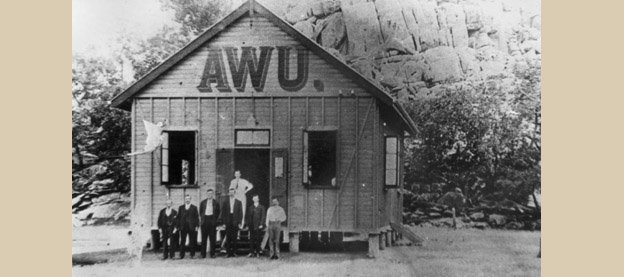
Chillagoe is a word from an old sea shanty “ikey, cryke, psyke, mikey, Chillagoe wallabodorie” and was the name given to William Atherton’s cattle station in the 1870’s. John Moffat sent the first prospecting party into the area in 1887 and with Atherton’s help found copper in the area.
Moffat was the magnate of the Herberton Mt Garnet tin fields, and from the start tried to develop the area as a whole. Out of 34 of the original leases pegged around Chillagoe, Moffat’s company held 26 and he employed 70 miners on developmental work on deposits around Chillagoe, Redcap, and Mungana. Transport was a problem, but by 1891 a smelter had been erected at Muldiva to treat the silver-lead ores and another at Calcifer in 1894 for the copper ores. In 1896 the Muldiva smelter was moved to Girofla.

Only the rich ores could be treated effectively without the necessary beneficiation. A central smelter was needed to treat lower grade ores. The Chillagoe Railways and Mines Co. Ltd was formed and in 1897 began construction on a railway from Mareeba to Chillagoe and Mungana. In 1901 the line was completed and a large copper smelting plant was opened by the company at Chillagoe. In 1903 the lead smelter was blown in.

From then until 1914 was the most prosperous period for the district. Much of the capital backing the companies was German and frozen when war broke out in 1914. This closed the smelters, though the Cardross smelter continued while Wolfram Camp and Bamford boomed, supplying tungsten ore.
In 1918, the Queensland Government bought the smelters and the 1920’s saw the small miner from all districts to Cloncurry battling a corrupt government enterprise when hand-picked rich ores brought low assays. This resulted in the Royal Commission of 1930 into the key political figures involved. The smelters continued to struggle on until closure in 1943 and were sold for removal in 1950.
Today, this geologically spectacular area is producing marble. Red Dome near Mungana was reopened as a gold mine by Elders then New Guinea Mining from 1986 to 1999. The marble from the area was used in the new parliament house in Canberra after first being shipped to Italy and resupplied as Italian marble.
Text taken from:
1. ‘Angor to Zillmanton: stories of North Queensland’s deserted towns’ by Colin Hooper (2002).
2. The Wild East website: www.thewildeast.net/infocus/chillagoe/history.htm
For more photographs visit: www.chillagoeguesthouse.com.au/slideshow.html










